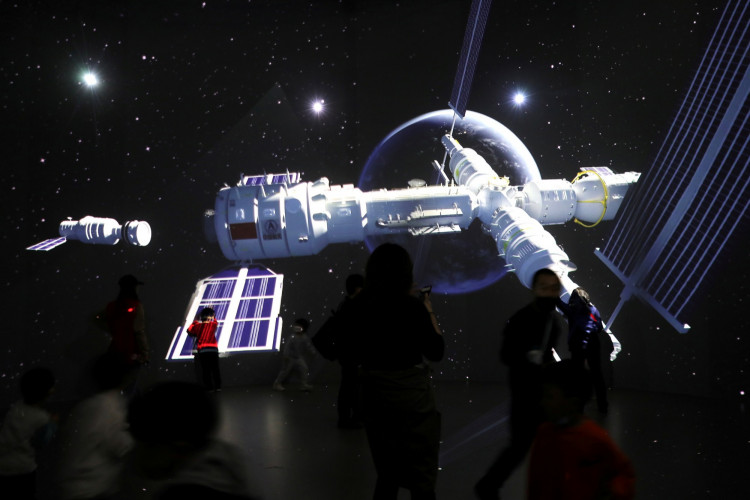China is preparing to launch its second crew of three astronauts to its new space station, which will include the first female visit to the orbiting lab.
Lin Xiqiang, deputy head of the China Manned Space Agency, confirmed at a news conference on Thursday that the Shenzhou 13 spacecraft will launch atop a Long March 2F rocket from Jiuquan Satellite Launch Center in the Gobi Desert at 12:23 p.m. EDT on Friday, Oct. 15(00:23 Oct. 16 local time).
Shenzhou 13 will launch at the same time as China's orbiting Tianhe space station module passes over Jiuquan, allowing the spacecraft to catch up and dock with Tianhe eight hours later.
Zhai Zhigang (commander), Wang Yaping, and Ye Guangfu have been confirmed as the crew for the six-month mission. The trio had been the backup for the Shenzhou 12 mission, which had just concluded.
The mission will be led by Zhai, the first Chinese person to perform a spacewalk during the Shenzhou 7 mission in 2008. Ye will fly for the first time, and Wang will be the first female astronaut to visit Tianhe. In 2013, Wang was a member of the Shenzhou 10 expedition and gave a space-based educational lecture.
Shenzhou 13's major mission objectives include testing vital technologies for space station assembly and development, which will receive two more modules in 2022.
The most noteworthy is transporting a module from one docking port to another via Tianhe's robotic arm's manual teleoperation. According to Chinese officials, the empty Tianzhou 2 spacecraft, which brought supplies to Shenzhou 12, will be utilized as a test item.
During the Shenzhou 13 mission, two to three extravehicular activities, or spacewalks, are also planned. The main goal will be to install an adaptor that will allow Tianhe's giant arm to communicate with a smaller arm on a future module.
Other objectives include further verification of the health, living and working support technologies for astronauts' six-month stay on orbit and the performance of scientific and technological experiments in fields such as space medicine and microgravity physics.
You can watch the launch live here, starting at about 9:25 a.m. EDT.






